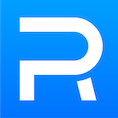(PR.co.nz) One of the country’s leading skin cancer experts says the lives of hundreds of New Zealanders and millions of dollars could be saved if more at risk Kiwis were screened regularly for melanoma.
Dermatologist Dr Mark Gray says preventable forms skin cancer kill too many Kiwis and regular screening of those with specific risk factors such as a history of sunburns, indoor tanning, light skin and blonde or red hair could reduce mortality rates significantly.
“For over 25 years we have heard sun protection messages such as “Slip Slop Slap” but despite huge Government investment in these programmes the melanoma incidence and mortality continues to rise,” says Dr Gray.
Every year more than 4,500 Kiwis are diagnosed with melanoma, with more than 320 dying annually – yet there is no public screening in place. It is the fourth most common invasive cancer and the sixth most common cause of death from cancer, he says.
“Recent figures[1] indicate that the direct costs of skin cancer in New Zealand plus the cost of lost production and the value of lives lost from melanoma could be more than $800 million per year.
“If we could reduce mortality by just 10%, we could see $80 million in economic benefits each year,” says Dr Gray.
Dr Gray says significant gains could be made in reducing the mortality rate for this deadly disease if every high risk individual was regularly screened.
The high risk category includes patients who have the following;
A lighter natural skin colour.
Family or personal history of skin cancer
Exposure to the sun through work and play.
A history of sunburns, especially early in life.
A history of indoor tanning.
Skin that burns, freckles, reddens easily, or becomes painful in the sun.
Blue or green eyes.
Blond or red hair.
Certain types and a large number of moles.
Several recent papers advocate targeting melanoma screening efforts toward those patients at high risk of developing and dying from melanoma, as well as toward those at-risk patients who are least likely to detect their own melanoma. Already across the Tasman, the Australian College of Dermatologists has recommended Medicare funding for dermatologist-provided high technology screening for high-risk patients.
Auckland mother of two and local fashion blogger Megan Robinson, who recently had her own melanoma scare supports the call for a comprehensive skin cancer screening programme. It was during a visit to MoleMap that her cancerous melanoma was finally flagged as concerning, the same melanoma that had previously gone undiagnosed by her dermatologist.
Robinson followed the advice of the melanoma monitoring service and decided to insist on the removal of the lesion.
“After my close call, there is no question to me that everyone in this country that has an elevated risk of melanoma needs to get themselves screened.”
MoleMap is the world’s most advanced melanoma surveillance programme which combines state of the art technology with the skills of specialist dermatologists to diagnose and detect melanoma at the earliest possible stage.
With 2,500,000 lesion images in its database (the largest database of lesions in the world), MoleMap data is already being used for studies and educational programmes in the United States and other melanoma centres throughout the world. World-leading cancer center, Memorial Sloan-Kettering Cancer Clinic (MSKCC) in the USA, collaborated with MoleMap in developing the latest melanoma screening tool – “The Ugly Duckling Sign” and is currently drawing on the database to further their ground-breaking studies in the diagnosis and treatment of skin cancer.
Media Release 2 December 2014.
